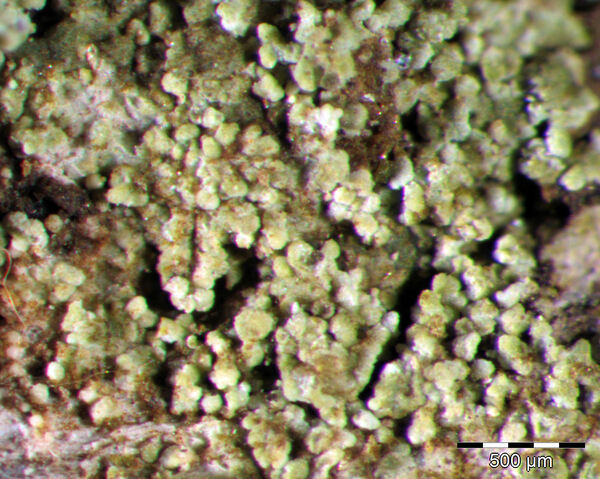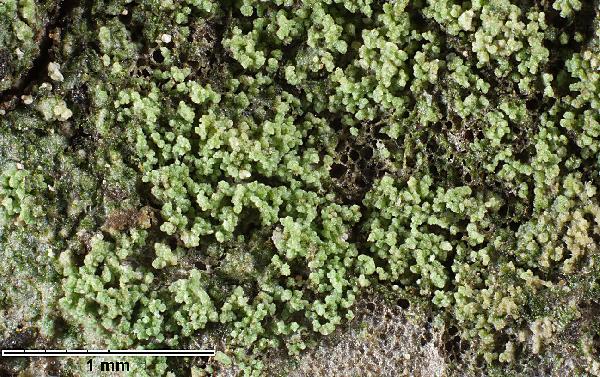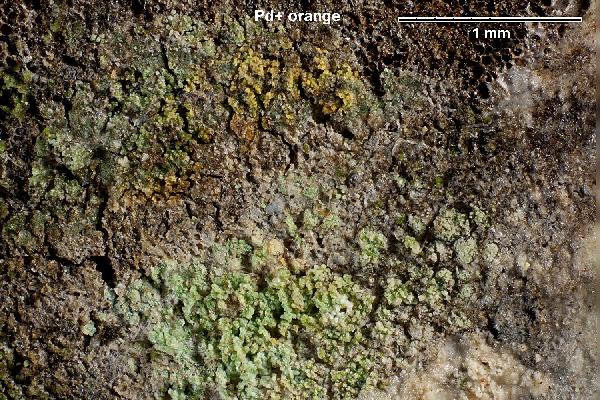Rinodina excrescens Vain.
in Ahlqu., Kolemann. tutkim. Länsi-Siperiassa, 4: 82, 1928.
Synonyms:
Distribution: C - Sar (Herb. Vondrák 10635).
Description: Thallus crustose, episubstratic, of scattered to contiguous, pale grey to grey-brown, flat to bullate, 0.1-0.5 mm wide, sublobate-subsquamulose, blastidiate areoles. Blastidia large, 60-100 μm wide, scattered and mostly marginal or finally forming a continuous crust, concolorous with areoles. Apothecia rare, lecanorine, sessile, up to 1 mm across, with a flat to slightly convex, slightly pruinose, brown disc, and an initially thick, entire and prominent thalline margin which tends to become thinner, flexuose, and often partially excluded; proper margin often visible as a parathecial ring within the thalline margin. Thalline exciple up to 80 μm wide laterally, expanded to 100-110 μm in lower part, I+ blue, inspersed with crystals, corticate, the cortex paraplectenchymatous, 15-20(-40) μm thick laterally, expanded to 40–60 μm in lower part, of thin-walled cells; proper exciple 10-15 μm wide laterally, expanded to 25-40 μm in upper part; epithecium reddish brown, with a granular epipsamma reacting P+ orange-red; hymenium colourless, (60-)80-100 μm high; paraphyses 1.5-2 μm thick at mid-level, the apical cells 2.5-3.5 μm wide; hypothecium colourless, 40-110 μm high. Asci 8-spored, clavate, the K/I+ blue tholus penetrated by a faintly amyloid apical cushion with parallel or diverging flanks, the wall K/I-, surrounded by a K/I+ blue outer layer, Lecanora-type. Ascospores 1-septate, slightly constricted at septum, brown, ellipsoid, (15-)17-19(-21) x (7.5-)9-10(-11.5) μm, Physcia-type, with smooth walls, a well-developed torus, and ontogeny of type A (apical wall thickening after the early septum formation). Photobiont chlorococcoid. Spot tests: thallus K-, C-, KC-, P+ orange-red. UV+ orange. Chemistry: thallus and apothecia with pannarin.Note: a rare species of acid bark, with a primarily eastern North American-eastern Asian distribution and scattered outliers elsewhere. The sample from Sardinia was collected on Erica arborea near S. Pantaleo (Olbia).
Growth form: Crustose
Substrata: bark
Photobiont: green algae other than Trentepohlia
Reproductive strategy: mainly asexual, by soredia, or soredia-like structures (e.g. blastidia)
Commonnes-rarity: (info)
Alpine belt: absent
Subalpine belt: absent
Oromediterranean belt: absent
Montane belt: absent
Submediterranean belt: absent
Padanian area: absent
Humid submediterranean belt: absent
Humid mediterranean belt: absent
Dry mediterranean belt: extremely rare
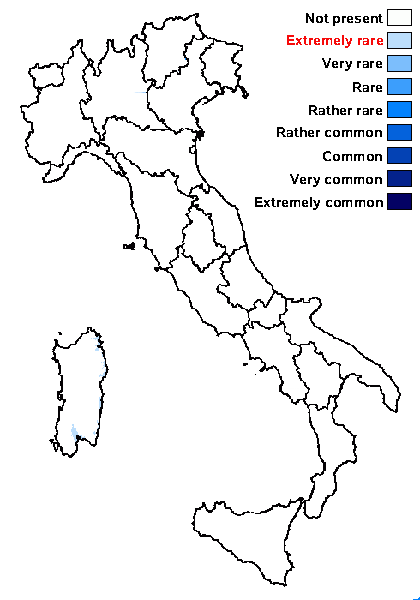
Predictive model
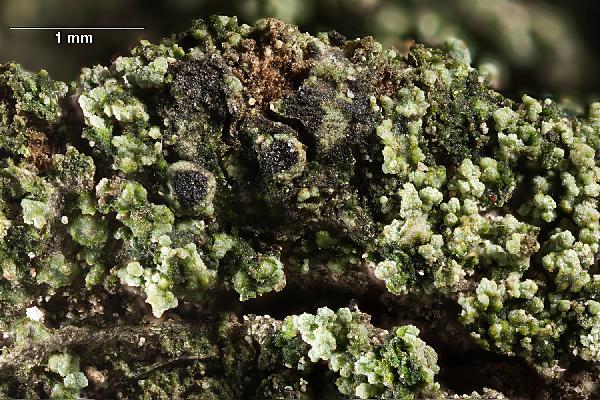
Ulrich Kirschbaum CC BY-SA 4.0 - Source: https://www.thm.de/lse/ulrich-kirschbaum/flechtenbilder
On conifers
SE Europe; N-Cyprus; SE of Girne; Beşparmak Mountains; between Alevkaya and Antiphonitis Monastery
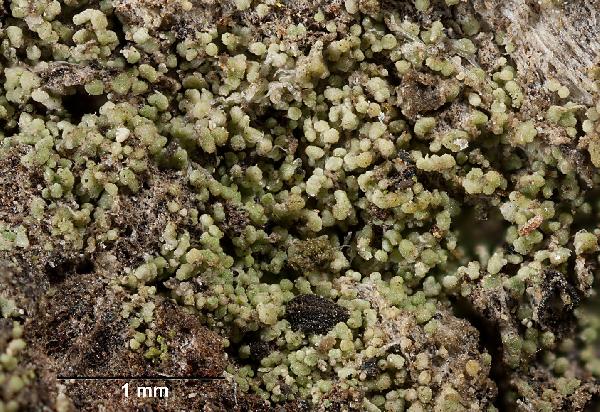
Ulrich Kirschbaum CC BY-SA 4.0 - Source: https://www.thm.de/lse/ulrich-kirschbaum/flechtenbilder
On conifers
SE Europe; N-Cyprus; SE of Girne; Beşparmak Mountains; between Alevkaya and Antiphonitis Monastery
Growth form: Crustose
Substrata: bark
Photobiont: green algae other than Trentepohlia
Reproductive strategy: mainly asexual, by soredia, or soredia-like structures (e.g. blastidia)
Commonnes-rarity: (info)
Alpine belt: absent
Subalpine belt: absent
Oromediterranean belt: absent
Montane belt: absent
Submediterranean belt: absent
Padanian area: absent
Humid submediterranean belt: absent
Humid mediterranean belt: absent
Dry mediterranean belt: extremely rare

Predictive model

Ulrich Kirschbaum CC BY-SA 4.0 - Source: https://www.thm.de/lse/ulrich-kirschbaum/flechtenbilder
On conifers SE Europe; N-Cyprus; SE of Girne; Beşparmak Mountains; between Alevkaya and Antiphonitis Monastery

 Index Fungorum
Index Fungorum
 GBIF
GBIF

